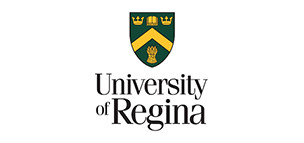Study In Canada

Do you have what it takes to have an awe-inspiring study experience? Then you should look no further than Canada! Now, you must be wondering why to study in Canada. Because it is the best, it takes pride in having a world-class education system (ranked 4th worldwide).
In addition, it boasts the best topmost universities and colleges in Canada with international students flocking to its doors. The QS World University Rankings 2025 lists multiple Canadian universities.
Canada surely provides affordability in studies in contrast to other higher tuition-fee nations, while in fact, it also has a varied and inclusive society, with individual evidence being that you find a multicultural and academically stimulating environment.
And the icing on the cake is that Canada gives excellent post-graduation work opportunities that may serve as grounds to build one's experience internationally. The best reason to study abroad has just been delivered, and it is none other than studying in Canada.
Why study in Canada?
Below are some reasons why you would want to choose Canada as your top educational dreamland:
1. World top-ranked universities
Universities from Canada possess a good educational history and an established reputation in terms of performance in the education and employability of the graduated students. Many of the higher educational institutions in Canada compete with leading and famous universities in the U.S. and the UK for instance.
|
University |
QS Global Ranking 2023 |
|---|---|
|
University of Toronto |
34 |
|
McGill University |
31 |
|
University of British Columbia |
47 |
|
University of Montreal |
116 |
|
University of Alberta |
110 |
|
McMaster University |
152 |
|
University of Waterloo |
154 |
|
Western University |
172 |
|
University of Ottawa |
237 |
2. Academic excellence
Unmatched in the education and competitive arena, Canada is the world in which one could ever dream of studying. A degree from Canada is very much renowned and recognized all around the world. The top-quality curriculum and experiential learning from universities provide holistic education, which is one of the main reasons for studying in Canada.
These programs enhance subject knowledge and skills such as teamwork, effective communication, critical thinking, and leadership qualities.
More than 20+ private universities and 90+ public universities are available in Canada with combined study options of 15,000 different disciplines. Some of the most popular colleges are Humber, Seneca, Centennial, and Selkirk.
An associate degree can be pursued in Canada too. If you want to look for a research master's or a PhD degree, then you must go for the U15 institution group of Canada.
3. Universities focus on research and ground-breaking discoveries
Research focuses on study programs offered by Canadian universities, wherein students involve themselves in riveting experiments and projects. This immersion presents a complete learning experience through innovative and futuristic thinking.
A significant chunk of research from the universities in Canada has spawned new theories and phenomenal discoveries. There is a device that can enhance the detection of cancer, novel ways to preserve the waters of the world, and efficient- and long-lasting -treatment with HIV/AIDS, and much more.
Can you believe that the first black doctor who graduated from studying in Canada? Also, a university in Toronto found out that Banting and Best discovered insulin.
Canada's gross domestic expenditure on R&D increased by 3.1% for the years 2019 to 2023 ($53.1 billion). So a future in science and research seems bright in Canada.
This clearly indicates that research is entirely put at the forefront by the Canadian government. Moreover, international students get a different range of research opportunities.
4. Diverse and cosmopolitan environment
Can you accept the fact that half of Canada’s population do not use English as their mother tongue?
The multicultural environment is a part of the Canadian environment; be it in classrooms or society. The numbers go to something like 120,000 internationally admitted students every year. This will make it very easy for any foreigner to adapt and make friends.
Secondly, it will allow you to experience cultural festivals or rituals that might be very new to you, such as:
- The Montreal International Jazz Festival
- Calgary Stampede
- NHL Hockey
- Experience "Poutine Week": a blend of French fries, delectable gravy, and cheese curd
- Just for Laughs Comedy Festival in Montreal
5. Safe and peaceful
Various indexes have named Canada as one of the safest countries which is why the crime rate is low. In addition, around 60% of international students apply for permanent residency after study.
Globally, in terms of social progress and development, according to Global News, Canada was placed second in the highest quality of life in the world. And one of the best parts is that all international students will have the same rights as their citizens.
Educational cost in Canada
Tuition costs in Canada depend on the kind of degree and institution you attend. Generally, students should estimate CAD 13,000 and 35,000 or so annually.
Usually, courses in the arts, humanities, and education are the most affordable while programs such as medicine and engineering will cost you more.
Tuition fees for the postgraduate level are typically higher, and the costs may differ, being specific to an individual course. Like most other nations, Canadian MBA programs are among the priciest, with average tuition fees hovering somewhere between CAD 30,000 and 42,000.
|
Education program |
Average annual fee |
|---|---|
|
Undergraduate Program |
$13,000 to $20,000 |
|
Postgraduate master’s degree |
$17,000 to $25,000 |
|
Doctoral Degree |
$7,000 to 15,000 |
|
MBA |
$30,000 to $40,000 |
Scholarship for international students
Canada is one of the most sought-after destinations to study for an equal opportunity provider. Thus, encouraging international students of all backgrounds to have scholarship opportunities for needy applicants to offer themselves up for admission to all Canadian universities.
Government Scholarships
|
Scholarship Type |
Description |
Benefits |
|---|---|---|
|
Vanier Canada Graduate Scholarships |
- named in honour of Major-General, the first francophone Governor General of Canada -aims at helping Canadian institutions attract exceptionally talented doctoral students. -annually, a maximum of 166 scholarships is awarded, with possibly up to 500 active scholarships in total at any given time. |
It is valued at $50,000 per year across three years of study while pursuing a doctorate. |
|
Banting Postdoctoral Fellowships |
-gives financial assistance to the highest-ranked postdoctoral candidates nationally and globally for development toward the economic, social, and research growth of the country. -about 70 awards every year and approximately 140 active awards at any given time. |
This amount is taxable and shall be valid for the years two non-renewable. The amount is fixed at $70,000. |
Some University-based Scholarships
|
Scholarship |
Description |
Benefits |
|---|---|---|
|
Carleton Entrance Scholarships |
Students with an admission average of 80 per cent or higher can apply |
Based on admission averages, scholarships amounting to $16,000, $12,000, $8,000, and $4,000 are offered |
|
Concordia Presidential Scholarship |
most prestigious university undergraduate entrance scholarship |
covers the tuition fees, books, residence and meal plan fees for a maximum of four years on the condition that the student continues to comply with renewability conditions. |
|
FDU International Scholarship |
FDU provides several merit scholarships for international undergraduate students |
Up to $24,000 annually |
Understand the Canadian education system
We can classify the educational system of Canada is majorly into two, primary and secondary school education, which includes K-12 education. The K-12 schools denote grade levels from Kindergarten to Grade 12.
Post-secondary education is the higher education in Canada. That's where a student attends or enrolls in a university, college, CEGEP, or vocational school, where they earn undergraduate and postgraduate degrees, diplomas, and certificates.
1. Basic and Secondary Education
This schooling system in Canada K-12 provides three options: public, private, and independent.
Public schools
Funded by the provincial government to abide by the provincial curriculum. These schools are overseen by a Board of Trustees about the school’s specific community.
Private schools
They operate under the regulations of each province or territory. Most provinces require private schools to be registered at their ministries of education under their respective provincial curriculum. Regions also differ according to how their statutes operate.
Independent schools
They are not for profit and are governed by a Board of Governors. Such schools are licensed within the provinces in which they operate and must comply with provincial standards.
The major difference between private schools and independent schools is that all private schools operate for profit, while independent schools are recognized as charitable.
2. Post-Secondary (Tertiary) Education
Post-secondary education comprises courses leading to certificates, diplomas, and degrees (as undergraduate and graduate studies) after students complete high school successfully.
It takes place in public and private vocational schools, CEGEPs, colleges, and universities. Those post-secondary institutions accredited to host international students are called designated learning institutes (DLI).
Universities
There are around 103 universities across Canada that offer upwards of 30,000 undergraduate (Bachelor’s) and postgraduate (Master’s and PhD) study programs. A university program provides comprehensive formal training comprising theory and practice.
Due to the content intensity, the undergraduate (Bachelor's) university programs require time ranging from three years up to four years. Lesser time-consuming courses are also being offered in the form of two-year Associate Bachelor's degrees.
What is the requirement to join a university?
Such degrees usually qualify students for entry to professional schools like medicine or law, and academia and research careers. Bachelor's degrees also serve as the prerequisite for postgraduate degrees, whether course-based or research-based master's degrees, followed by doctoral degrees, the highest academic standing that students can achieve.
Colleges
Canada has over 130 colleges. Canadian colleges are focused more on applied and technical education dedicated to specific careers. They offer smaller classes with lower student-to-teacher ratios, which allows educators to give personalized attention and have much more practical or hands-on learning opportunities.
Graduates from most college programs will receive a diploma certification, although increasing numbers of colleges have begun to become accredited as offering degrees-in some cases completing the more hands-on and technical training with university academic course work.
Canada allows students to have at least three separate intakes, unlike a single intake as in Nepalese universities. In some universities in Canada, intakes are rather termed semesters. Thus, there are three intakes available in Canada:
Fall: The most popular intake among Nepalese students is Fall, which usually begins in September.
Winter: For those who missed enrolling in September, this will start in January.
Summer: Summer intake usually spans from around April to May but is limited to fewer programs and colleges.
Well, Students can apply for a Permanent Residency while studying in Canada. However, eligibility factors like work experience and language knowledge will come into play.
Most students find it more fruitful to apply for PR soon after graduation through programs like the Post-Graduation Work Permit (PGWP).
